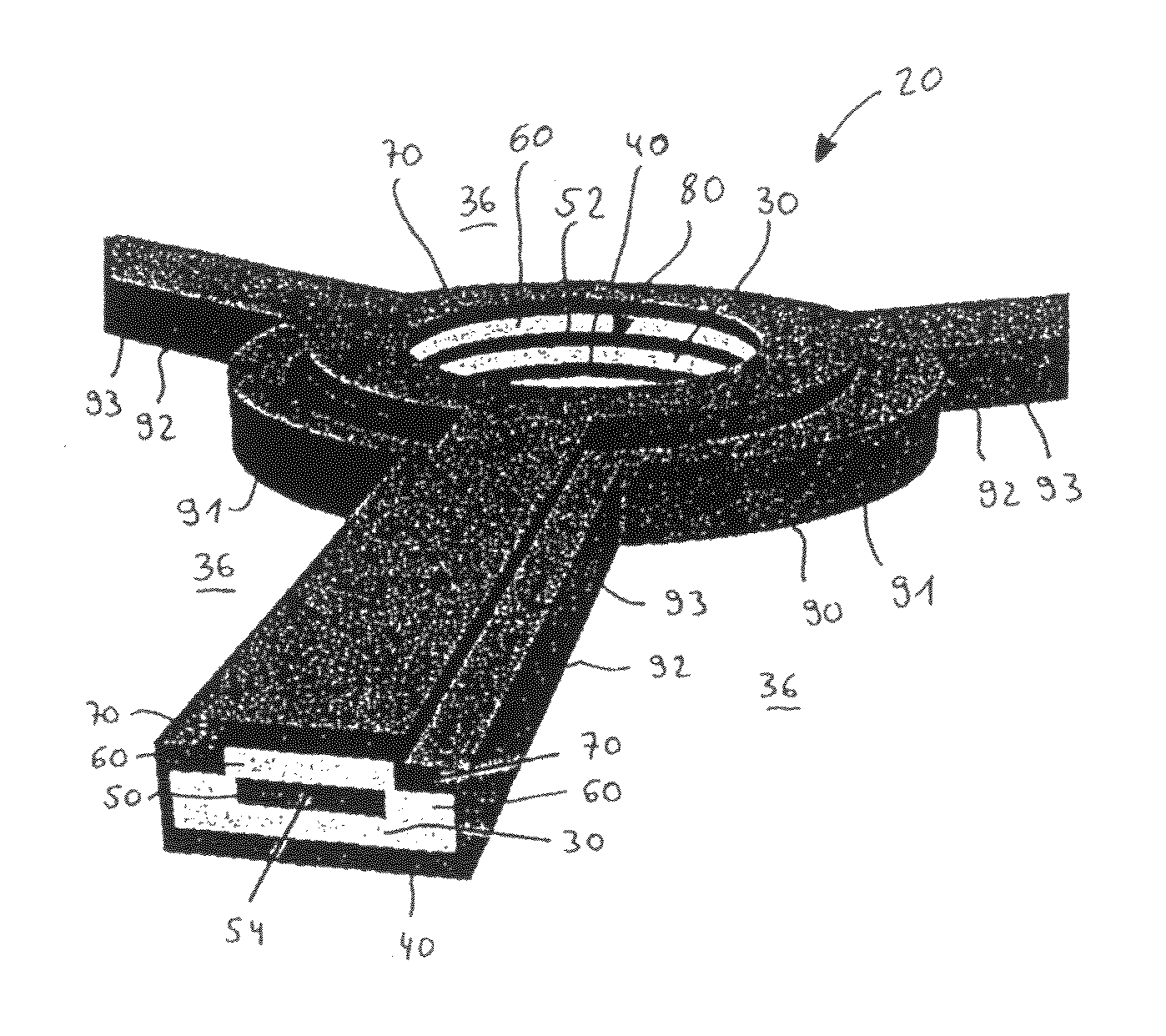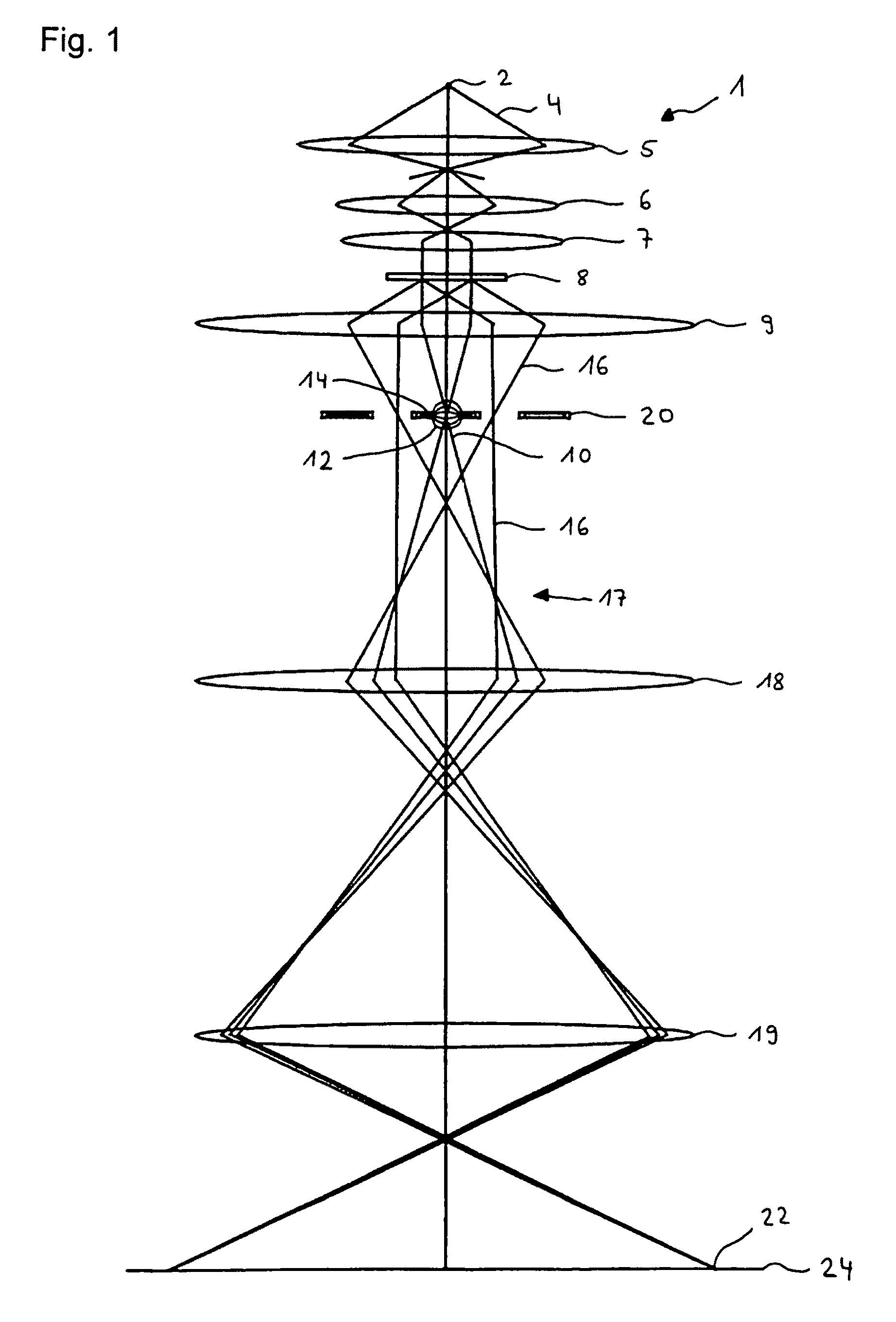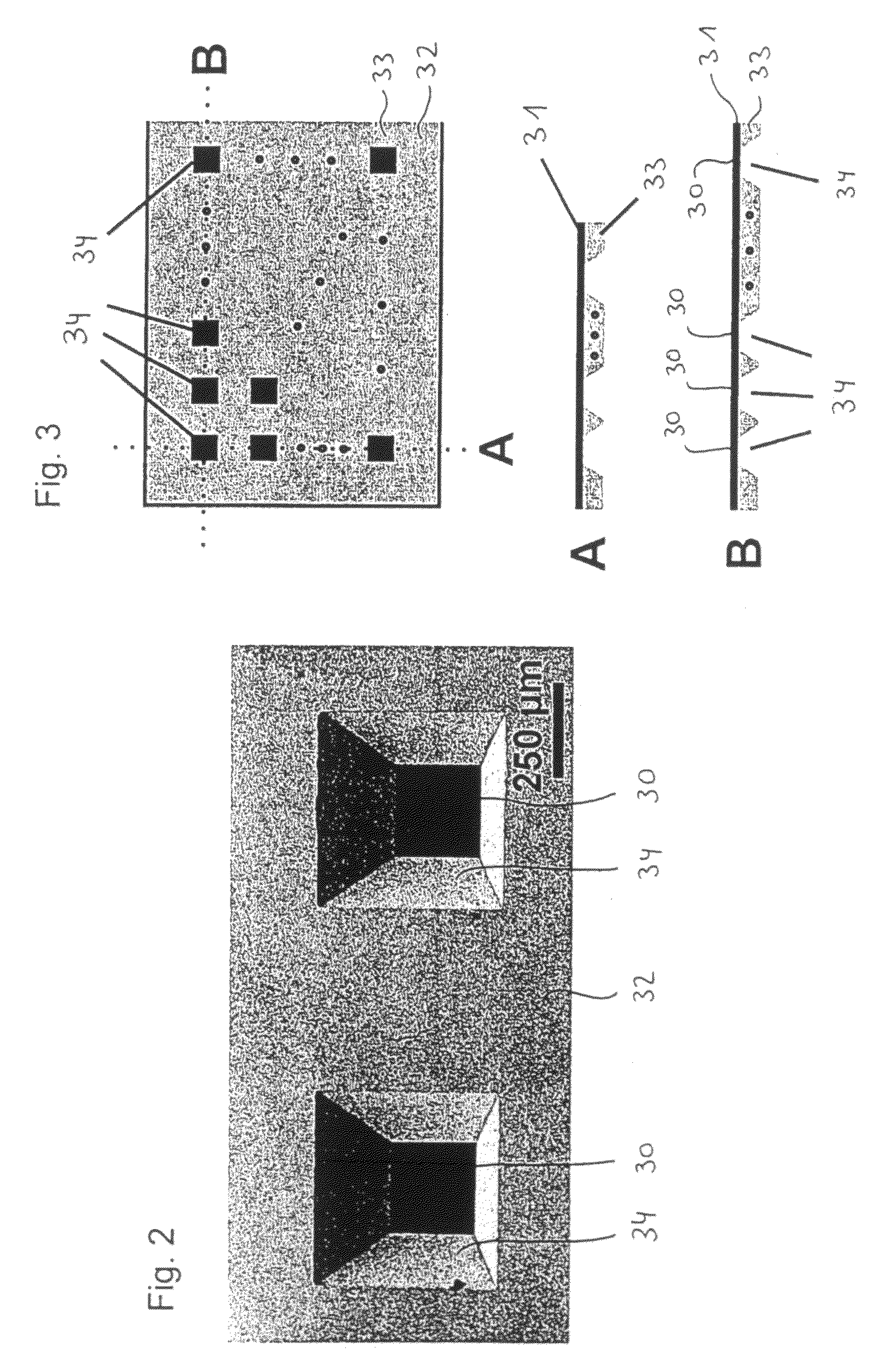Method for the production of multiplayer electrostatic lens array
a technology of electrostatic lens array and multi-layer technology, which is applied in the direction of mass spectrometer, particle separator tube, instruments, etc., can solve the problems of difficult phase plate phase plate realization, difficult photosensitive samples, and often only being loaded, etc., to achieve the effect of being versatile and improving
- Summary
- Abstract
- Description
- Claims
- Application Information
AI Technical Summary
Benefits of technology
Problems solved by technology
Method used
Image
Examples
Embodiment Construction
[0079]FIG. 1 shows a transmission electron microscope 1 with a phase plate 20, as described in the introduction.
[0080]A plane base for the building of a layer arrangement is important for the practicability of later structuring steps in the course of the present invention. Said base can be metallic or insulating. The thickness of the base decisively influences the entire thickness of the lens arrangement to be produced. Within the framework of the invention therefore very thin membranes are used as base. The membrane becomes a component of the lens arrangement to be produced. Herewith the overall thicknesses of the lens arrangement of less than 100 nm can be realized.
[0081]With reference to FIG. 2 a silicon enriched silicon nitride layer about 100 nm thin deposited on a silicon wafer is used, said layer forming a self-supporting silicon nitride membrane 30 in each of two membrane windows 34. Said membrane has proven to be particularly suitable, in particular since silicon nitride is...
PUM
| Property | Measurement | Unit |
|---|---|---|
| diameter | aaaaa | aaaaa |
| diameter | aaaaa | aaaaa |
| thickness | aaaaa | aaaaa |
Abstract
Description
Claims
Application Information
 Login to View More
Login to View More - R&D
- Intellectual Property
- Life Sciences
- Materials
- Tech Scout
- Unparalleled Data Quality
- Higher Quality Content
- 60% Fewer Hallucinations
Browse by: Latest US Patents, China's latest patents, Technical Efficacy Thesaurus, Application Domain, Technology Topic, Popular Technical Reports.
© 2025 PatSnap. All rights reserved.Legal|Privacy policy|Modern Slavery Act Transparency Statement|Sitemap|About US| Contact US: help@patsnap.com



